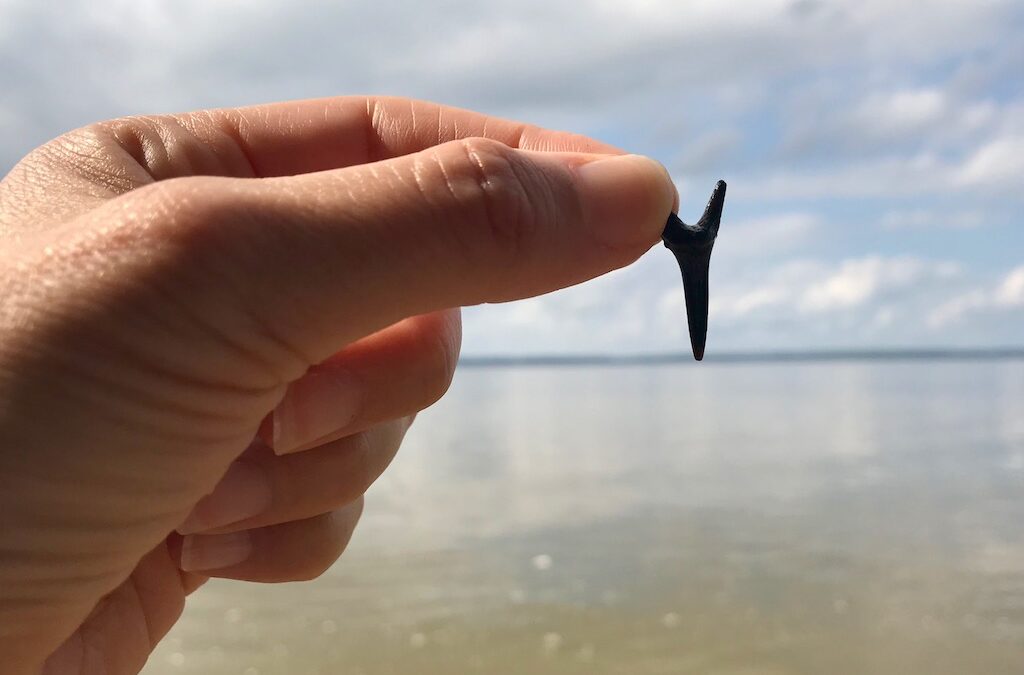Long before the Jersey Shore became known for its bustling boardwalks and summer crowds, this region was once covered by a vast ancient ocean.
Tens of millions of years ago, prehistoric sharks, including the colossal megalodon – the largest shark to ever swim the oceans – patrolled these warm, shallow seas. Today, fossilized remnants of these ancient creatures, especially shark teeth, continue to surface along the coast, offering a glimpse into a world long gone.
Fossilized shark teeth are found along many beaches and river inlets throughout New Jersey, but Cape May’s Sunset Beach has earned a reputation as a particularly rich hotspot for collectors. The unique geography and strong currents here continuously shift the sand and sediment, exposing teeth and other marine fossils that have been buried for millions of years.
However, fossil hunters don’t have to travel all the way to Cape May to find these prehistoric treasures. Along the entire New Jersey coastline, especially near river inlets such as Shark River Inlet in Monmouth County, and Absecon Inlet, fossilized shark teeth often wash ashore.
These inlets act as natural channels, carrying sand and fossil material from deeper, underwater deposits onto the beaches, making them prime locations for fossil collecting.
Best conditions for finding fossils
Timing and conditions play major roles in a successful fossil hunt. After heavy storms, powerful waves churn up the ocean floor and shift the sands, often revealing fossils that had been hidden beneath the surface. Low tide is another ideal time as it exposes more of the beach, allowing beachcombers to explore areas that are usually underwater.
Pay close attention to the color and texture of the sand. Areas with darker, coarser sand or patches mixed with gravel are more likely to contain fossilized material. These layers tend to be heavier and contain the mineralized remains of ancient marine life, including shark teeth.
Identifying fossilized shark teeth
Fossilized teeth usually appear black or dark brown in color, a result of mineralization over millions of years replacing the original tooth material. Their shapes can vary, but shark teeth are commonly triangular. The teeth of some species show serrated edges, designed for slicing through prey. While large megalodon teeth – some as big as a person’s hand – are rare finds, smaller teeth from extinct and near-shark species are more common along New Jersey’s shores.
Tools and tips for collectors
Fossil hunting is an accessible and rewarding hobby that requires minimal equipment. A small shovel or trowel is helpful for digging through sand and gravel, and a sifter or kitchen colander can be used to wash away finer materials, leaving behind fossils to examine more closely. Patience is essential. Finding that first tooth can take time, but the thrill of discovery makes the effort worthwhile.
It’s important to follow local regulations and respect the environment while fossil hunting. Staying within designated areas, avoiding disturbance of dunes and wildlife habitats, and limiting the amount collected ensures that these natural treasures remain available for others to enjoy.
Fossil hunting along the Jersey Shore offers a unique way to connect with the deep past by holding tangible evidence of prehistoric oceans in your hand, and the incredible creatures that once inhabited them.
Whether you’re an experienced collector or a curious beginner, the sands of New Jersey hold stories waiting to be uncovered.
Sarah is a South Jersey native with a passion for writing. She’s contributed to Shore Local since its founding, and cares deeply for homegrown journalism and celebrating communities.













